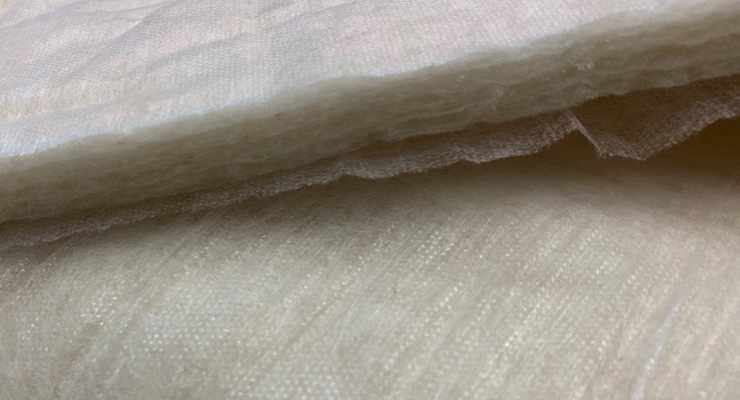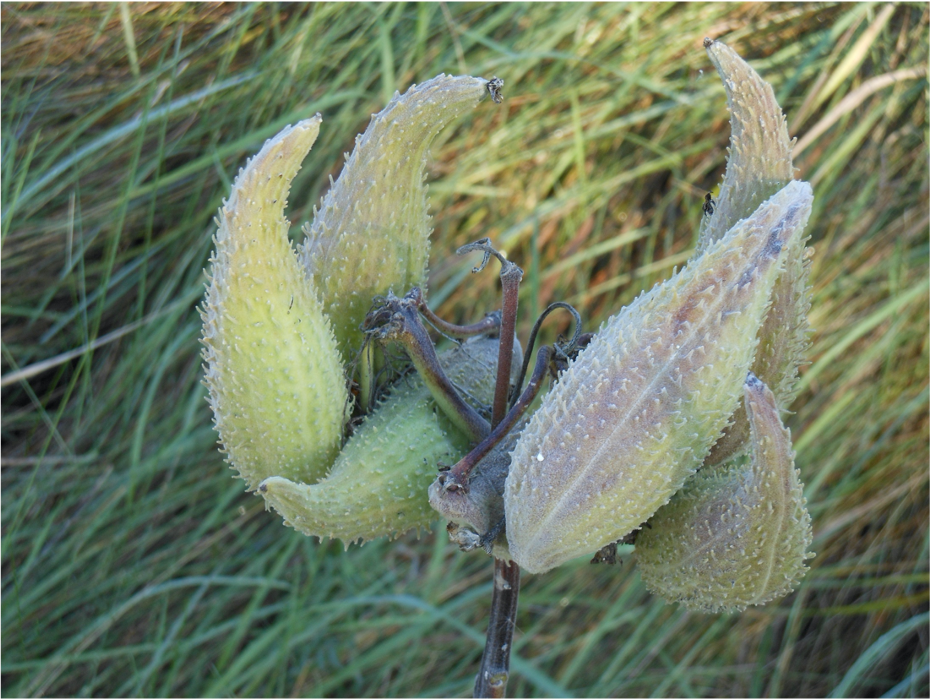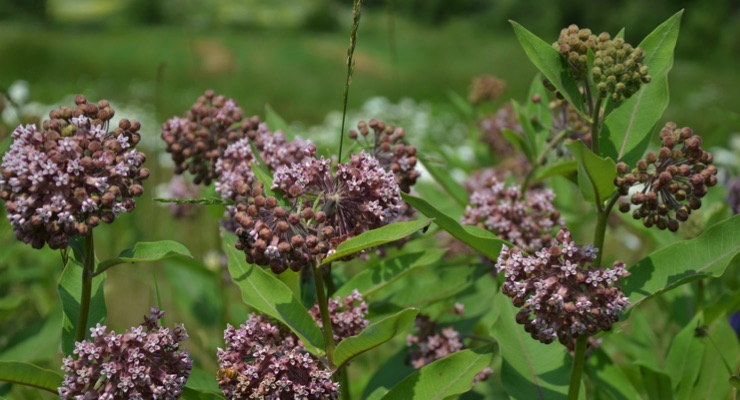Tara Olivo, associate editor05.17.22
An innovative and eco-friendly nonwoven based on milkweed fibers has been developed by Vegeto for thermal insulation applications. The company’s milkweed nonwoven is suitable as a thermal insulator for coats, gloves, sleeping bags, blankets and quilts.

Vegeto's milkweed insulation
Vegeto was founded by a Canadian entrepreneur with the idea of developing eco-friendly textile solutions from natural fibers. Beyond natural fibers, the realization that cotton farming is highly water-intensive led to the exploration of less resource-demanding alternatives, according to Ghyslain Bouchard, general manager of Vegeto. “Several years of relentless research and development have led to the creation of milkweed and hemp-based raw materials, with many ideas in the works,” he says.
Vegeto’s nonwoven milkweed insulation is entirely plant-based, with a blend of milkweed and kapok fibers combined with a bio-polymer made from sugarcane or cornstarch. The transformation begins with the opening of the pods. The fiber is then separated from the seeds by a delicate handling process developed by Vegeto. The components are then mixed and assembled into a finished product between two pieces of scrim.
According to the company, milkweed fiber has many advantages. Milkweed's silky fiber is naturally hollow, which allows it to store air very efficiently in a lightweight fashion. “These are particularly interesting characteristics for thermal insulation for garment applications,” Bouchard says. “This hollow structure is in fact copied by some synthetic insulations.”
Meanwhile, the CLO* performance ranges from 2.5 to 4.5 depending on the weight selected from the four options: 100 g/sqm, 150 g/sqm, 200 g/sqm and 250 g/sqm.
Additionally, while some natural materials require the use of many resources and pesticides to grow, milkweed fiber does not. “The milky sap of the plant is toxic to most insects; therefore, the use of pesticides or repellents is not required,” Bouchard explains. “The monarch caterpillar is immune to this toxin, but it feeds on the leaf and not on the pod that contains the fiber.”
Adding to these benefits, Bouchard says the milkweed plant grows even in poorer soils, allowing growers to rotate crops and diversify their types of agriculture. “Not only is the plant beneficial for soil conservation, but its flower attracts pollinators at a time of year when flowering is scarcer.”
Although the price of milkweed insulation compared to synthetic material is a little more expensive, he says that it’s often more affordable than goose or duck feathers.

Milkweed pods
In addition to its high thermal performance, milkweed's insulating capacity also makes it a good sound insulator. Some tests have been conducted for use in the automotive industry. Also of interest is the hydrophobic property of the fiber in its natural state. The fiber is naturally coated with a wax, and it will then tend to repel water, but absorb oil, which Bouchard says is an interesting property for the making of petro-absorbents.
“The textile industry is definitely looking for truly eco-friendly solutions and Vegeto intends to set the tone,” he says. “The potential of hemp fiber is very promising. Vegeto does not shy away from thinking outside the box and looking for materials never explored by the industry.”
* CLO is a value that describes the degree of insulation provided by clothing.

Vegeto's milkweed insulation
Vegeto’s nonwoven milkweed insulation is entirely plant-based, with a blend of milkweed and kapok fibers combined with a bio-polymer made from sugarcane or cornstarch. The transformation begins with the opening of the pods. The fiber is then separated from the seeds by a delicate handling process developed by Vegeto. The components are then mixed and assembled into a finished product between two pieces of scrim.
According to the company, milkweed fiber has many advantages. Milkweed's silky fiber is naturally hollow, which allows it to store air very efficiently in a lightweight fashion. “These are particularly interesting characteristics for thermal insulation for garment applications,” Bouchard says. “This hollow structure is in fact copied by some synthetic insulations.”
Meanwhile, the CLO* performance ranges from 2.5 to 4.5 depending on the weight selected from the four options: 100 g/sqm, 150 g/sqm, 200 g/sqm and 250 g/sqm.
Additionally, while some natural materials require the use of many resources and pesticides to grow, milkweed fiber does not. “The milky sap of the plant is toxic to most insects; therefore, the use of pesticides or repellents is not required,” Bouchard explains. “The monarch caterpillar is immune to this toxin, but it feeds on the leaf and not on the pod that contains the fiber.”
Adding to these benefits, Bouchard says the milkweed plant grows even in poorer soils, allowing growers to rotate crops and diversify their types of agriculture. “Not only is the plant beneficial for soil conservation, but its flower attracts pollinators at a time of year when flowering is scarcer.”
Although the price of milkweed insulation compared to synthetic material is a little more expensive, he says that it’s often more affordable than goose or duck feathers.

Milkweed pods
In addition to its high thermal performance, milkweed's insulating capacity also makes it a good sound insulator. Some tests have been conducted for use in the automotive industry. Also of interest is the hydrophobic property of the fiber in its natural state. The fiber is naturally coated with a wax, and it will then tend to repel water, but absorb oil, which Bouchard says is an interesting property for the making of petro-absorbents.
“The textile industry is definitely looking for truly eco-friendly solutions and Vegeto intends to set the tone,” he says. “The potential of hemp fiber is very promising. Vegeto does not shy away from thinking outside the box and looking for materials never explored by the industry.”
* CLO is a value that describes the degree of insulation provided by clothing.


